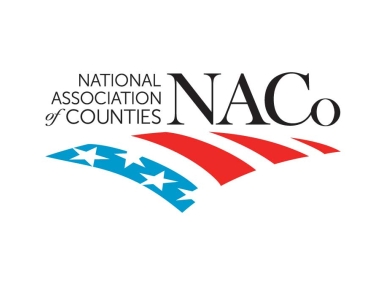U.S. Environmental Protection Agency releases new definition of the “waters of the United States”
Author

Charlotte Mitchell Duyshart

Andrew Nober
Upcoming Events
Related News

Key Takeaways
On November 17, the U.S. Environmental Protection Agency (EPA) and U.S. Army Corps of Engineers (USACE) released a proposed rule defining what constitute the “waters of the United States” and are subject to federal regulation under the Clean Water Act. The new definition is narrower than previous rules and codifies the decision of U.S. Supreme Court in the 2023 case Sackett v. EPA.
Background
The Clean Water Act (CWA) sets pollution control standards for many waterways in the U.S., including the establishment of the National Pollutant Discharge Elimination System. In statute, the CWA prohibits the discharge of pollutants into “navigable waters,” described as the “waters of the United States, including the territorial seas.” The CWA does not define that term in any greater detail. As a result, the EPA and USACE, which both implement aspects of the law, have clarified what are jurisdictional “waters of the United States” (WOTUS) through rulemaking and in response to court decisions about the law.
In January 2023, the agencies finalized rulemaking that expanded protections for waterways through the “relatively permanent” and “significant nexus” tests. In May 2023, the U.S. Supreme Court handed down a decision in Sackett v. EPA invalidating the 2023 January Rule definition as being too broad.
In its decision, the Court found that the CWA’s provisions applied to “only those relatively permanent, standing or continuously flowing bodies of water ‘forming geographic[al] features’” and to wetlands only if they are jurisdictional “in their own right” and “are as a practical matter indistinguishable from waters of the Unites States, such that it is difficult to determine where the water ends and the wetland begins.” The EPA and USACE issued a new definition in line with the Supreme Court’s decision, known as the 2023 Conforming Rule, but separate litigation led to it being invalidated in 26 states.
In March 2025, the agencies signaled their intention to develop a new rule that could be applied nationally. At that time, NACo, along with the U.S. Conference of Mayors and National League of Cities, submitted a joint comment letter to the agencies urging the rule to include clear, consistent language that provides regulatory certainty and enables local leaders to easily determine jurisdictional status.
What does the new rule say?
The 2025 Proposed Rule clarifies the existing definition of WOTUS through definitions of the terms “relatively permanent,” “continuous surface connection,” “ditch” and “tributary” and makes other adjustments to the definition’s language. The Proposed Rule narrows federal jurisdiction under the CWA. Among the changes, the Proposed Rule:
- defines “relatively permanent” as including both permanent water and waters that exist “at least during the wet season”
- defines “continuous surface connection” to remove jurisdiction for wetlands that are only next to jurisdictional waters and implement a new, two-part test that requires wetlands both to have surface water consistent with the “relatively permanent” definition and to touch an otherwise jurisdictional water
- removes jurisdiction for waters based solely on the fact that they are “interstate” waters
- explicitly excludes groundwater from being jurisdictional
- clarifies the exclusion for “prior converted cropland,” “waste treatment system,” and “ditch” by providing definitions for these terms
Broadly, the new definitions under the 2025 Proposed Rule narrow the scope of federal jurisdiction, principally through more stringent qualifications for wetland environments.
What is the impact on counties?
Counties are responsible for essential water infrastructure, including public safety water conveyances, municipal separate stormwater sewer systems (MS4s), green infrastructure projects and water reuse systems. Whether a body of water is jurisdictional under WOTUS determines whether counties need permits for construction and improvement projects.
Counties are also co-regulators and benefit from regulatory certainty and clarity. The detailed definitions of many terms offered by the 2025 Proposed rule aligns with county needs for consistency. The restructuring of the “relatively permanent” provision also raises the question of what qualifies as “the wet season.”
What happens next?
The EPA and USACE have opened a 45-day public comment period as they work to finalize the rule. Interested or affected counties can submit their comments here. Comments must be received by January 5, 2026.
NACo will continue to work with its partner organizations to provide feedback on the proposed rule and its impact on counties and local governments nationwide.
WOTUS Resources
Related News

County Countdown – Dec. 1, 2025
Every other week, NACo's County Countdown reviews top federal policy advocacy items with an eye towards counties and the intergovernmental partnership.

Counties Celebrate Key Permitting Inclusions in SPEED Act
NACo issued the following statement in response to the passage of the Standardizing Permitting and Expediting Economic Development (SPEED) Act (H.R. 4776), which advanced out of the U.S. House Committee on Natural Resources on November 20.

House Natural Resources Committee advances Standardizing Permitting and Expediting Economic Development (SPEED) Act
On November 20, the U.S. House Committee on Natural Resources advanced the Standardizing Permitting and Expediting Economic Development (SPEED) Act (H.R. 4776), which would make important changes to streamline federal permitting and strengthen county involvement in decision-making by amending the National Environmental Policy Act. Counties support commonsense permitting reforms, and NACo secured provisions in the SPEED Act that would guarantee counties a seat at the table during federal environmental reviews.
Resource
NACo Regulatory Analysis: The Waters of the United States
